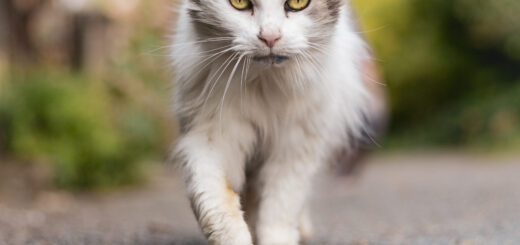Understanding Feline Behavior: Decoding Cat Body Language And Communication
Have you ever wondered what your furry feline friend is trying to tell you? Cats may not speak our language, but they have their own way of communicating with us through their body language. By learning to decode their signals and understand their behavior, we can develop a deeper understanding of our cats and strengthen our bond with them. In this article, we will explore the fascinating world of cat body language and communication, helping you unravel the mysteries of your cat’s behavior. Get ready to embark on a journey of feline discovery!
This image is property of images.pexels.com.
Understanding Feline Behavior
Introduction to cat behavior
Cats are fascinating creatures that have been sharing our homes and lives for thousands of years. Understanding their behavior is essential for building a strong bond with them and ensuring their well-being. In this article, we will explore the intricate world of feline behavior, decoding their body language, communication, and the meaning behind their various behaviors. We will also discuss the factors that can affect their behavior and the impact of human interaction on their overall demeanor.
Decoding Cat Body Language
The importance of cat body language
Cats are known for being independent and mysterious, but their body language can provide valuable insights into their thoughts and emotions. By learning to interpret their body language, we can better understand their needs and ensure their comfort and happiness.
Common body language signals
Cats communicate through a variety of body language signals. One of the most common signals is the tail position. A relaxed and upright tail indicates a content and confident cat, while a low or tucked tail suggests fear or anxiety. Other body language signals include ear positions, eye movements, and vocalizations. By observing these signals, we can gain insight into how a cat is feeling and respond accordingly.
Understanding tail positions
A cat’s tail can tell us a lot about their mood and intentions. A high and upright tail indicates a friendly and confident cat, while a puffed-up tail accompanied by an arched back suggests aggression or fear. A low or tucked tail signals submission or anxiety. By paying attention to a cat’s tail position, we can better understand their current state of mind and adjust our interactions accordingly.
Interpreting ear positions
A cat’s ears are highly expressive and can communicate a range of emotions. Forward-facing and slightly tilted ears indicate a relaxed and interested cat, while flattened or backward-facing ears suggest fear, aggression, or annoyance. By observing a cat’s ear positions, we can gauge their comfort level and respond accordingly.
Analyzing eye movements
A cat’s eyes can reveal a lot about their emotional state. Wide-open eyes suggest curiosity and interest, while dilated pupils may indicate fear or excitement. Slow blinking is a sign of trust and contentment, while staring without blinking can signal aggression or a challenge. By carefully observing a cat’s eye movements, we can better understand their feelings and ensure a positive interaction.
Reading vocalizations
Cats have a wide range of vocalizations, each with its own meaning. Meowing is a common form of communication and can signify various needs such as hunger, attention, or distress. Purring is often associated with contentment and relaxation, while growling and hissing serve as warning signs of aggression or fear. By listening to a cat’s vocalizations, we can better understand their needs and respond accordingly.
Communication Among Cats
Types of feline communication
Cats communicate with each other using a combination of visual, vocal, olfactory, and tactile signals. These forms of communication allow them to convey information, establish boundaries, and maintain social bonds within their feline communities.
Visual communication between cats
Visual communication among cats involves body postures, facial expressions, and tail and ear positions. A cat may use these visual cues to signal aggression, submission, playfulness, or territoriality. By observing the body language of cats during their interactions, we can better understand the dynamics of their relationships and their intentions.
Vocal communication among cats
Cats communicate with each other through a wide range of vocalizations, from gentle chirps and trills to loud meows and growls. These vocal signals serve several purposes, including establishing territory, attracting mates, expressing fear or discomfort, and establishing social bonds. By listening to the vocal exchanges between cats, we can gain insights into their relationships and emotional states.
Olfactory communication
Cats also communicate through scent cues. They have scent glands located on various parts of their body, including the cheeks, paws, and tail. When a cat rubs against objects or other cats, they are depositing their scent and marking their territory. By sniffing and investigating these scent signals, cats can gather information about each other, establish familiarity, and communicate their presence.
Tactile communication
Touch plays an important role in feline communication. Cats use physical contact to establish bonds, show affection, and convey messages to one another. They may engage in social grooming, where one cat grooms another as a sign of trust and friendship. Cats may also rub against each other, exchanging scents and marking each other as part of their social group. By engaging in tactile communication, cats strengthen their social bonds and establish a sense of belonging.
The Meaning Behind Different Behaviors
Understanding aggression
Aggression is a common behavior in cats and can be displayed for various reasons. It is important to understand that aggression may stem from fear, frustration, territoriality, or a combination of factors. Signs of aggression may include growling, hissing, swatting, biting, or even excessive scratching. By recognizing the signs of aggression, we can take appropriate measures to address the underlying cause and ensure the safety of both the cat and those around them.
Recognizing fear and anxiety
Cats may display fear or anxiety through various behaviors, such as hiding, excessive grooming, avoiding social interactions, or even urinating outside the litter box. It is essential to identify these signs and provide a calm and secure environment to help alleviate their fears. By understanding and addressing the underlying causes of fear and anxiety, we can help our cats feel safer and more at ease.
Deciphering play behavior
Play is an integral part of a cat’s life, and understanding their play behavior is crucial for their overall well-being. Cats engage in play to satisfy their predatory instincts, release energy, and build social bonds. Play behavior often includes pouncing, chasing, batting, and wrestling. By providing appropriate toys and interactive play sessions, we can satisfy their play needs and stimulate their minds.
Analyzing grooming habits
Grooming is not only a way for cats to keep themselves clean but also serves as a social behavior. Cats may groom themselves and other cats in their social group as a means of bonding and maintaining social harmony. Excessive grooming or a sudden change in grooming habits may indicate stress or an underlying health issue. By monitoring their grooming habits, we can detect any abnormalities and seek appropriate veterinary care if needed.
Interpreting hunting instincts
Cats are natural hunters, and their hunting instincts are deeply ingrained. Even in domestic environments, cats may exhibit hunting behaviors, such as stalking, pouncing, and chasing. Understanding these instincts helps us provide appropriate outlets for their predatory behavior, such as interactive toys or food puzzle games. By satisfying their hunting instincts in a safe and controlled manner, we can keep them mentally stimulated and reduce any potential behavioral issues.

This image is property of images.pexels.com.
Factors Affecting Feline Behavior
Environmental factors
The environment in which a cat lives greatly influences their behavior. Cats thrive in a calm and predictable environment that provides them with opportunities for exploration, play, and rest. Factors such as the availability of hiding places, scratching posts, and vertical spaces can greatly impact their overall well-being. By providing a cat-friendly environment with enriching resources, we can help ensure their physical and mental needs are met.
Socialization and early experiences
Early socialization plays a crucial role in shaping a cat’s behavior. Kittens that are exposed to various people, animals, and environments during their early development are more likely to grow up to be sociable and confident cats. Positive experiences during this critical period help them develop trust and adaptability. By socializing kittens through gentle handling, exposure to new experiences, and positive reinforcement, we can create a solid foundation for their future behavior.
Health issues impacting behavior
Physical health can significantly impact a cat’s behavior. Pain, illness, or discomfort may cause changes in behavior, such as decreased appetite, reduced activity levels, or increased aggression. Regular veterinary check-ups are essential to ensure that any underlying health issues are identified and addressed promptly. By maintaining their overall health, we can help prevent potential behavioral problems and ensure their well-being.
Human-Interaction and Impact on Cat Behavior
Understanding human-cat interactions
As cat owners, our interactions with our feline companions can greatly influence their behavior and well-being. Positive interactions based on trust, respect, and understanding can help build a strong bond with our cats. Conversely, negative interactions or mishandling can lead to fear, anxiety, and aggression.
Positive reinforcement and training
Positive reinforcement is a highly effective method of training and shaping a cat’s behavior. By rewarding desired behaviors with treats, praise, or play, we can encourage our cats to repeat those behaviors. This approach focuses on rewarding positive behaviors rather than punishing unwanted behaviors. This creates a positive and trusting relationship between us and our cats.
Common behavioral problems in cats
Cats may develop various behavioral problems, such as aggression, inappropriate scratching, or litter box issues. These problems can stem from medical conditions, environmental factors, or emotional distress. By understanding the underlying causes of these issues and seeking appropriate professional help, we can address and manage these problems effectively.
Creating a cat-friendly environment
Creating a cat-friendly environment is crucial for promoting their well-being and contentment. Providing appropriate resources, such as scratching posts, litter boxes, cozy resting areas, and interactive toys, helps satisfy their natural instincts and needs. By designing our homes with our cats in mind, we can create a harmonious living environment that supports their overall behavior and happiness.
This image is property of images.pexels.com.
Building a Strong Bond with Your Cat
Developing trust
Building trust is the foundation of a strong bond with your cat. It takes time, patience, and consistent positive interactions. Avoid forcing interactions or overwhelming them with attention. Instead, provide them with space, allow them to approach you on their terms, and reward their approach with treats or gentle play. By letting the cat set the pace and respecting their boundaries, we can earn their trust and establish a lasting bond.
Promoting mental stimulation and play
Cats are intelligent creatures that require mental stimulation to prevent boredom and destructive behaviors. Providing interactive toys, puzzle feeders, and regular play sessions keeps their minds engaged and enriches their lives. Experiment with different toys and play techniques to find what captures your cat’s interest and engages their hunting instincts.
Meeting their basic needs
Meeting a cat’s basic needs is essential for their overall well-being. This includes providing a balanced diet, fresh water, a clean litter box, and regular veterinary care. Cats are also territorial animals and require vertical spaces, scratching surfaces, and hiding spots to feel secure. By fulfilling their basic needs, we create a stable and comfortable environment for them to thrive.
Providing a safe and secure environment
Creating a safe and secure environment is crucial for a cat’s physical and emotional well-being. Ensure that your home is free from potential hazards such as toxic plants, chemicals, or small objects that could be swallowed. Provide them with cozy hiding spots where they can retreat and feel safe. By creating a secure environment, we foster a sense of trust and help our cats feel protected.
Recognizing and Addressing Behavioral Issues
Identifying signs of stress and anxiety
Stress and anxiety can manifest in various behaviors in cats. Common signs include inappropriate elimination, excessive grooming, aggression, hiding, and changes in appetite. It is crucial to identify these signs and address the underlying causes to help our cats feel more relaxed and secure.
Dealing with aggression
Aggression in cats can be challenging to manage, but understanding its causes is key to addressing the problem. Aggression may result from fear, pain, resource guarding, or territoriality. Seeking professional help, such as consulting a veterinarian or a feline behaviorist, can provide guidance on managing and modifying aggressive behavior effectively.
Managing inappropriate scratching and biting
Cats have a natural instinct to scratch, but when directed towards furniture or people, it can become a problem. Providing appropriate scratching surfaces, such as scratching posts or pads, helps redirect their behavior. Additionally, regularly trimming their nails and providing alternative outlets for their energy through play can help alleviate this issue.
Addressing litter box problems
Litter box problems, such as urinating or defecating outside the litter box, can be indicative of underlying issues. These issues may include medical conditions, the litter box’s placement or cleanliness, or stress and anxiety. By identifying and addressing the cause of these problems, such as consulting a veterinarian or modifying the litter box setup, we can help ensure proper litter box usage.
Seeking Professional Help
When to consult a veterinarian
Consulting a veterinarian is essential when dealing with any significant changes in a cat’s behavior. They can rule out any underlying medical conditions that may be affecting their behavior and provide appropriate treatment or guidance. If you notice any sudden or severe behavior changes, consulting a veterinarian should be the first step to ensure your cat’s well-being.
Working with feline behaviorists or trainers
Feline behaviorists or trainers specialize in understanding and modifying cat behavior. They can provide valuable insights, techniques, and guidance on resolving behavioral issues or helping cats adjust to new environments. Working with a professional can greatly enhance our understanding of our cats’ behaviors and improve our ability to address any issues effectively.
Importance of positive reinforcement methods
Positive reinforcement methods are vital when working with cats. By rewarding desired behaviors with treats, praise, or play, we encourage them to repeat those behaviors. Positive reinforcement fosters trust, strengthens the bond between us and our cats, and facilitates effective communication. It promotes a healthy and positive learning environment based on encouragement and rewards rather than punishment.
Conclusion
Understanding feline behavior is crucial for providing a happy and fulfilling life for our feline companions. By decoding their body language, understanding their communication methods, and addressing any behavioral issues, we can foster a strong bond, ensure their well-being, and create a harmonious home environment. Remember, cats are unique individuals with their own personalities, preferences, and needs. With patience, love, and a childlike curiosity, we can learn to understand and appreciate the fascinating world of feline behavior.









